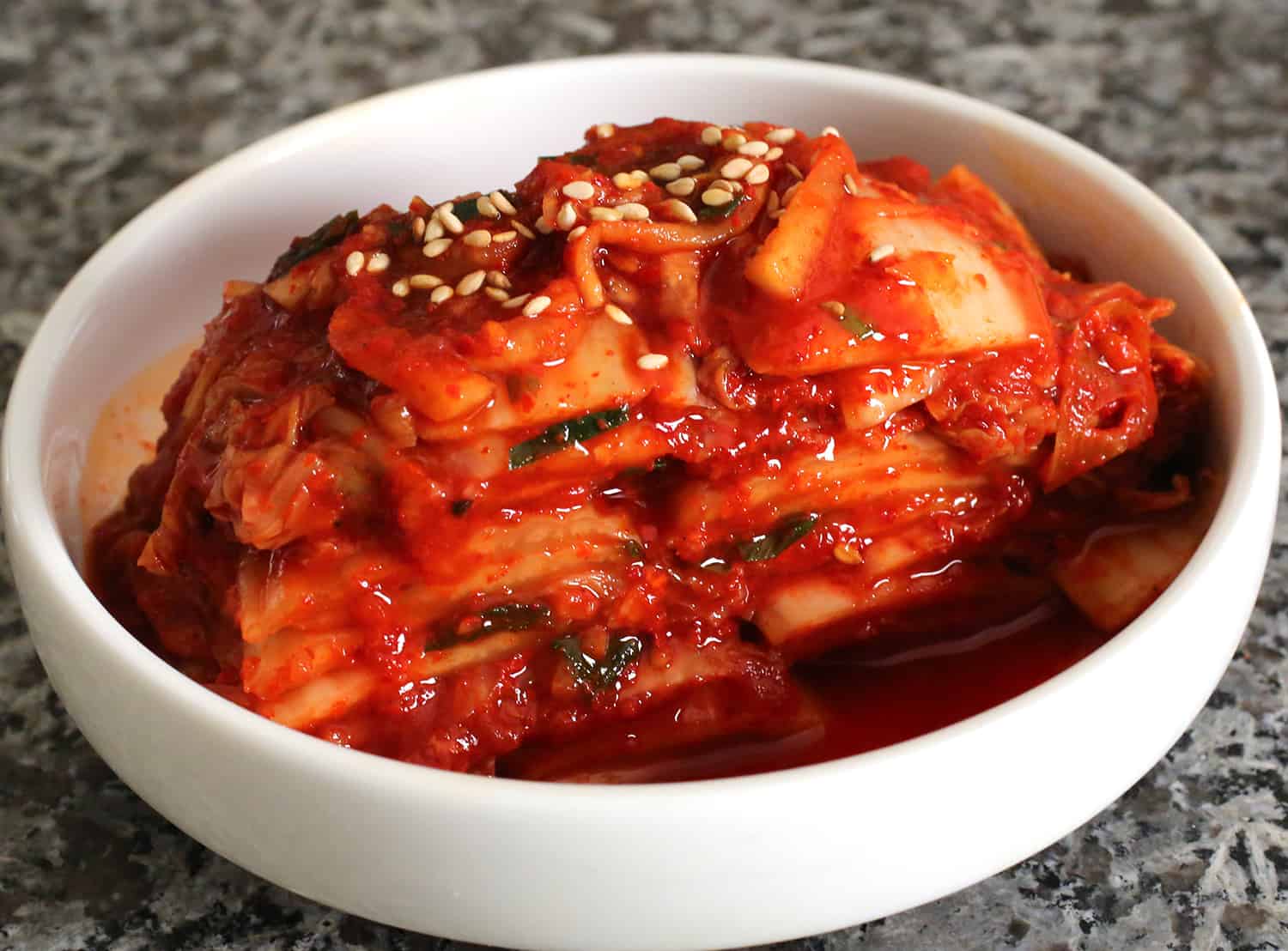Kimchi Recipe (Napa Cabbage Kimchi) 624
by Admin
Posted on 12-10-2023 02:50 PM

Kimchi / kimchee (김치) is a traditional korean side dish made from fermented cabbage, radish, or cucumber. It is often categorized by the main vegetable ingredient used to make it.
 Kimchi is a staple
food
in korean cuisine. Most koreans have it with almost every korean meal at least once a day. The most popular kimchi includes baechu kimchi (made with napa cabbage, 배추김치), kkakdugi (made with radish, 깍두기), and oi kimchi (made with cucumber, 오이김치).
Kimchi is a staple
food
in korean cuisine. Most koreans have it with almost every korean meal at least once a day. The most popular kimchi includes baechu kimchi (made with napa cabbage, 배추김치), kkakdugi (made with radish, 깍두기), and oi kimchi (made with cucumber, 오이김치).
Are you a kimchi lover who’s wondered how to make kimchi at home ? here’s how to make your own easy, fermented kimchi with this authentic korean recipe (without the fish sauce!) we’re kicking off the year with a new fermentation project that you’re going to love! we did kickass kombucha , then kickass kefir , and now…we kickass kimchi! kimchi can be a bit of a mystery for those who haven’t tried it (hell, it can be a mystery even if you have tried it). At its core, kimchi is fermented cabbage. But it’s so much more. It’s spicy and umami and sour and perfect for adding zing to everything from fried rice to tacos!.
Baechu, or napa cabbage , kimchi is made by lacto-fermentation, the same process that creates sauerkraut and traditional dill pickles. In the first stage, the cabbage is soaked in a salty brine that kills off harmful bacteria. In the second stage, the remaining lactobacillus bacteria (the good guys!) convert sugars into lactic acid, which preserves the vegetables and gives them that wonderful, tangy flavor. If you want to learn more about fermentation, i highly recommend the art of fermentation by sandor katz.
Hello everybody! today i’m going to show you how to make classic, spicy, traditional napa cabbage kimchi called tongbaechu-kimchi, a. K. A. Baechu-kimchi or pogi-kimchi. But this dish is so common and iconic among koreans that we simply call it “kimchi. ” when people talk about kimchi, this is the side dish they’re referring to, despite the fact that there are many kinds of kimchi in korean cuisine , and many made with napa cabbage, too. Over the years i’ve posted recipes for a few of them, but i’ve never made an in-depth video for making tongbaechu-kimchi! i’ve made a video for mak-kimchi (easy kimchi recipe) , which is very similar but is easier because you to chop up the cabbage into bite size pieces first, and i’ve made an ultra simple yangbaechu-kimchi ( emergency kimchi).
Benefits of Homemade Kimchi
Given the popularity of kimchi today, there are many excellent options available from supermarkets and speciality stores, but if you want to benefit from the probiotics, you need to purchase it ready-made from the chilled section. The benefits of homemade are that you can add the ingredients you like, then ferment your kimchi until it tastes just right and it’s also very simple and inexpensive to make. Once the vegetables are prepared, fermentation takes care of the rest.

What Does Kimchi Taste Like
The most suitable word to describe the taste of kimchi is “complex”. Since kimchi is prepared from several vegetables and seasonings, it develops a complex flavor that doesn’t fit into the traditional definition of sweet, salty, or sour. The taste of kimchi depends on the ingredients and the recipe you follow. However, if you are still looking for specific flavors to name, you may call it a bit spicy, umami, and sour. The flavor also depends on the vegetables, the amount of salt and sugar added and the duration of fermentation. Here are some flavors and tastes you can expect when you prepare kimchi using common ingredients:.
Vegetables are tasty. Fermented vegetables are even better! in a nutshell, fermented vegetables are more digestible, tastier, and healthier. Lacto-fermentation (also called lactic acid fermentation) transforms plain vegetables into delicious kimchi. Fermentation involves lactic acid bacteria (naturally found in vegetables), which eat the sugar in the vegetables and create lactic acid. This is what gives the fermented vegetables their tender texture, and their nice tangy taste. Fermentation requires only salt and an oxygen-free environment to be successful. It’s as simple as mixing vegetables and salt and putting them in a jar! to learn all about vegetable fermentation, check out the complete guide to lacto-fermentation.
Q: can you open kimchi while its fermenting? a: you can, and probably should after a week. Use a sanitized fork to fish out a piece to taste. If it’s to your liking, you can stop the process then. If not, you can let it continue to process with its kraut source lid in place. Q: can you over ferment kimchi? a: yes and no. The longer it ferments, the more sour it will become. Generally, fermenting it for more than a couple of weeks outside the refrigerator is not advised as the lactic acid will continue to work on it in the fridge, albeit more slowly.